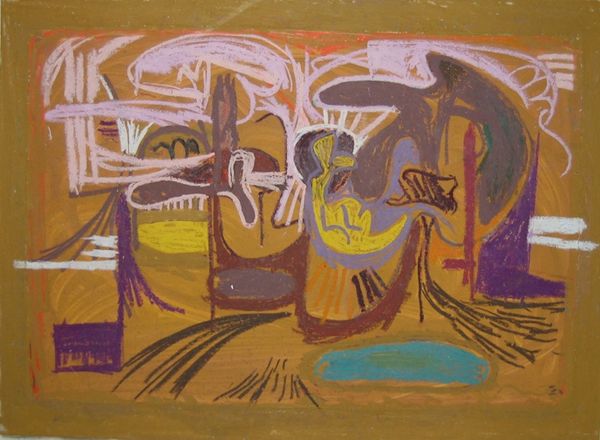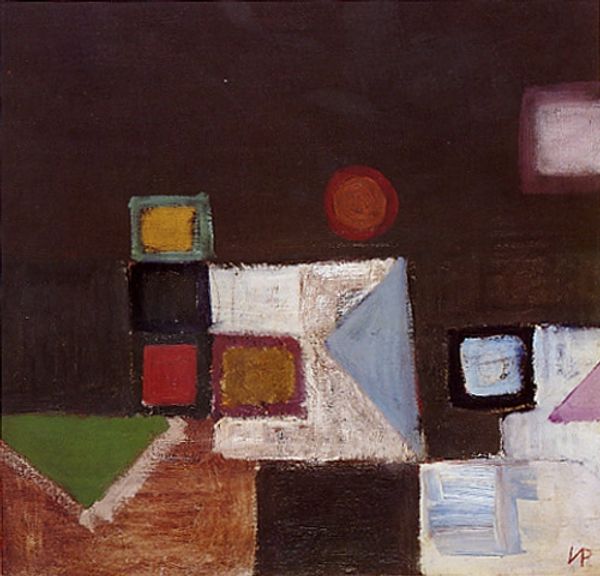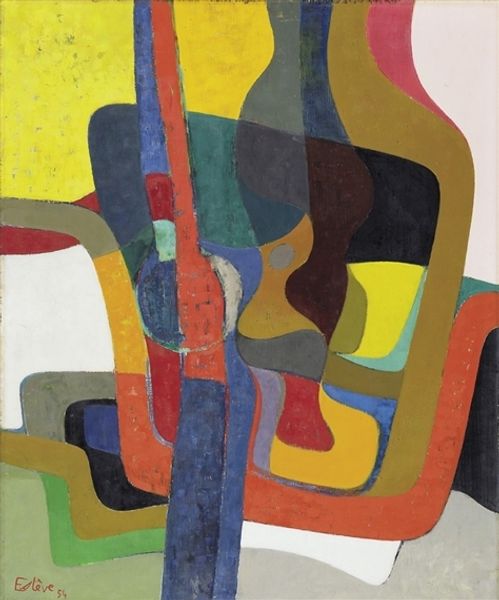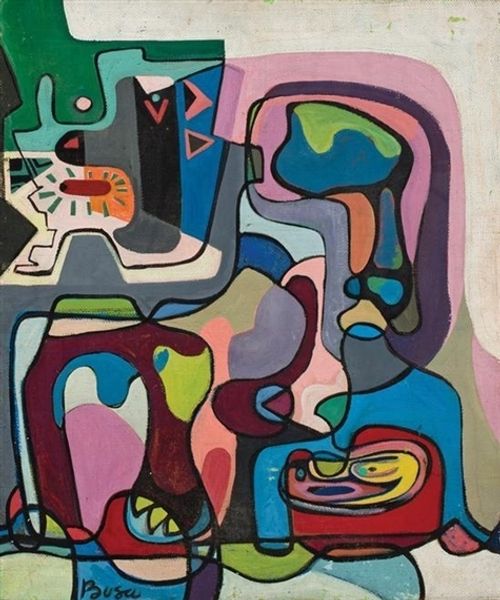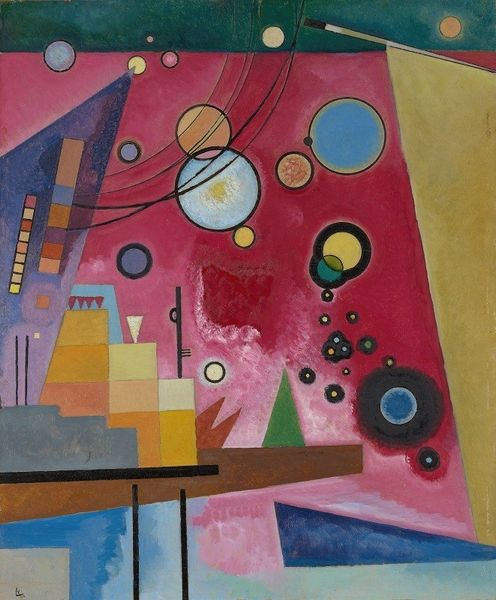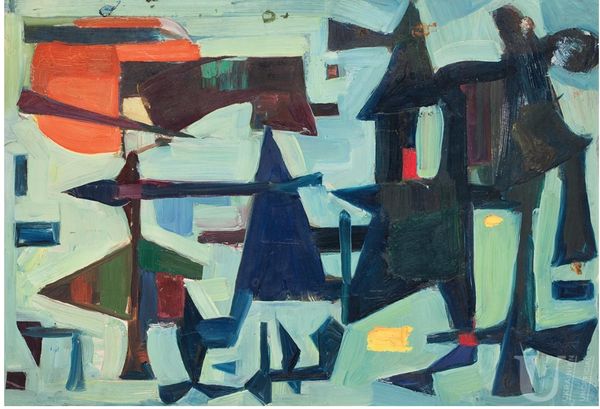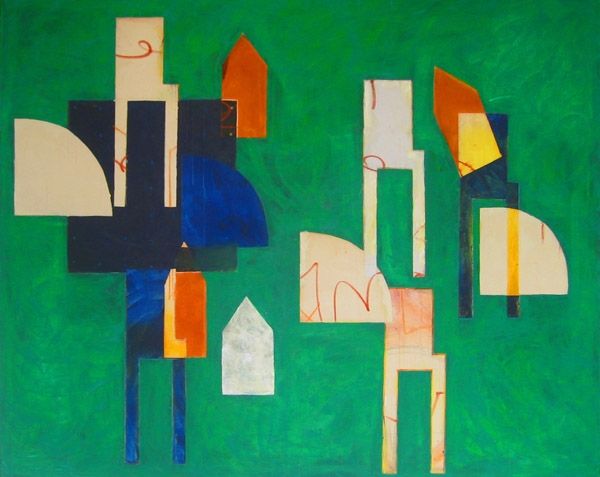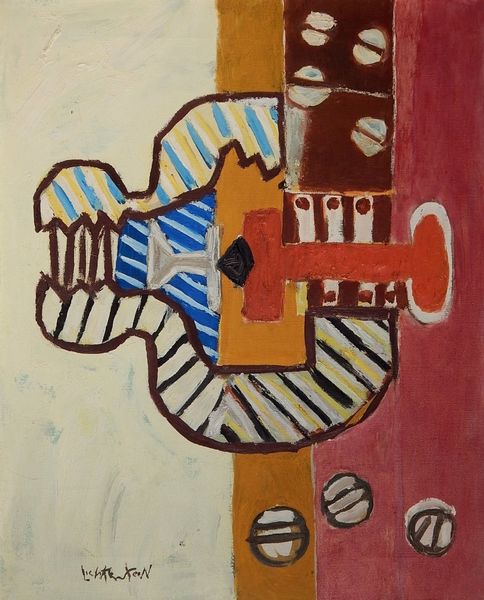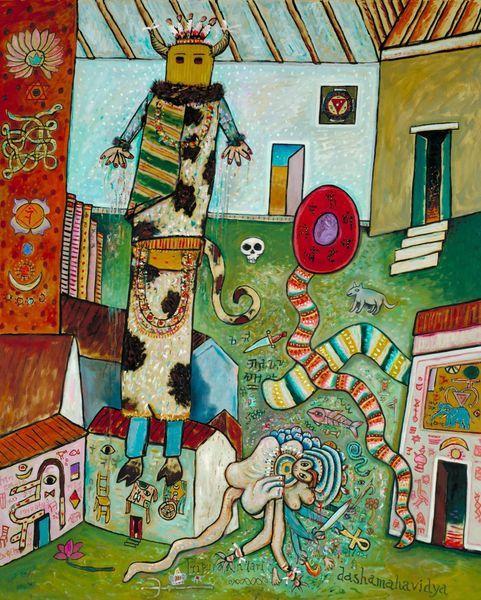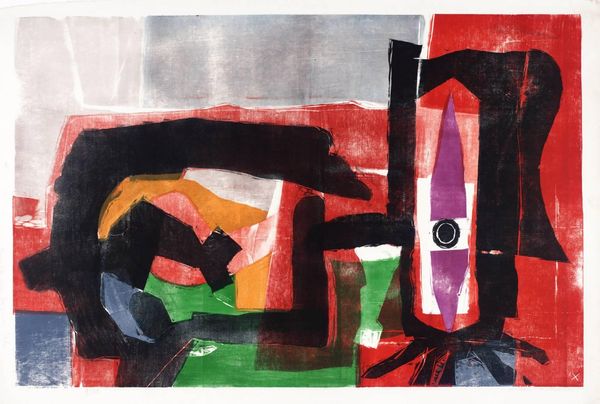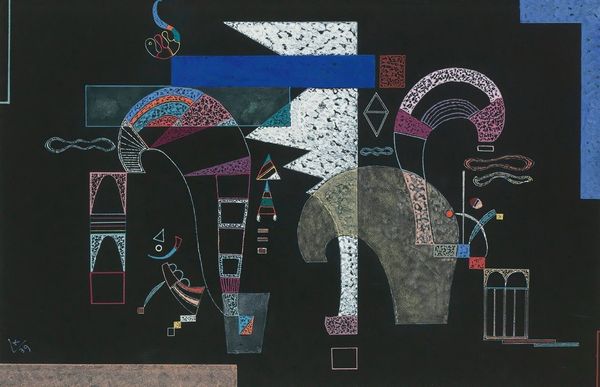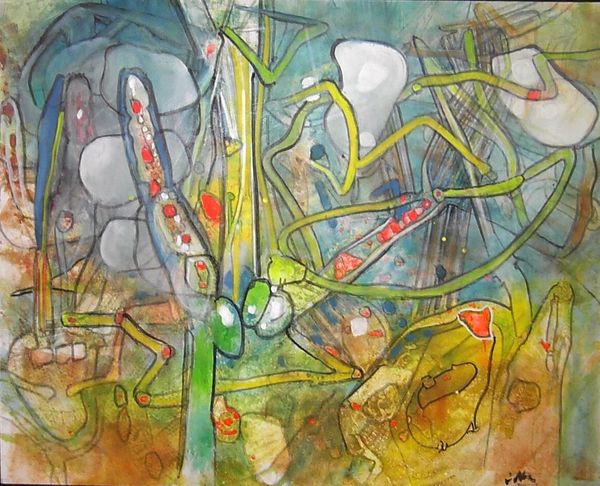
acrylic-paint
#
cubism
#
abstract painting
#
fauvism
#
canvas painting
#
acrylic-paint
#
abstraction
#
cityscape
Copyright: Le Corbusier,Fair Use
Editor: This painting, “Cubist Pipe Lines” by Le Corbusier, appears to be an acrylic-on-canvas work with stacked, interconnected shapes, and the colour palette gives off almost fauvist expression. How would you interpret this work, and perhaps situate it within the social contexts that informed Le Corbusier's practice? Curator: Considering Le Corbusier’s architectural and urban planning theories, I find this work reflective of his modernist vision, even beyond the constraints of architecture. His ideal of the city as a well-oiled machine – a "radiant city", which echoes the social engineering concepts, deeply affected the discourse in arts. The pipe lines, the abstract forms… could this be read as a visual manifestation of societal infrastructure, forcing functionality and efficiency to every component of our lived spaces? Editor: So, seeing these geometric forms, even in a non-architectural work, as echoing his social project is key here? Curator: Precisely! Consider the historical context: post-WWI Europe, the rise of industrialization, a utopian desire to rebuild society through rational design, art, and urban design as one grand socio-political project. It reflects not just an aesthetic choice, but a philosophical and political stance on modernity, its promises and potential pitfalls. Le Corbusier presents an underlying notion: control, rationalisation, top-down planning with deep class tensions. What is your take on it? Editor: That’s an interesting take. I hadn’t considered the sense of control in abstraction here. Curator: Perhaps consider further the social cost of modernism. Mass housing, planned communities often come with their dark sides such as displacement and dispossession. Abstraction, when read within the social history, becomes part of the modernist vocabulary that aimed for functional utopias that ironically ignored local context or traditions. Editor: Thinking about it now, your interpretation reveals so much complexity beyond just the style of cubism, which I now see as infused with political dimensions and its effects. Curator: Yes! We always have to reflect on how a historical project touches on and shapes today's identity, race and political discourse.
Comments
No comments
Be the first to comment and join the conversation on the ultimate creative platform.
